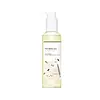What's inside
What's inside
 Key Ingredients
Key Ingredients

 Benefits
Benefits

 Concerns
Concerns

 Ingredients Side-by-side
Ingredients Side-by-side

Helianthus Annuus Seed Oil
EmollientCaprylic/Capric Triglyceride
MaskingSorbeth-30 Tetraoleate
EmulsifyingLimnanthes Alba Seed Oil
Skin ConditioningGlycine Max Oil
EmollientSqualane
EmollientCeramide NP
Skin ConditioningPhytosphingosine
Skin ConditioningHydrogenated Lecithin
EmulsifyingGlycerin
HumectantAnthemis Nobilis Flower Oil
MaskingOlea Europaea Fruit Oil
MaskingCaprylyl Glycol
EmollientEthylhexylglycerin
Skin ConditioningEthylhexyl Palmitate
EmollientCapryloyl Salicylic Acid
ExfoliatingRosmarinus Officinalis Leaf Oil
MaskingCymbopogon Martini Oil
MaskingCitrus Aurantium Bergamia Fruit Oil
MaskingTocopherol
AntioxidantLimonene
PerfumingLinalool
PerfumingGeraniol
PerfumingHelianthus Annuus Seed Oil, Caprylic/Capric Triglyceride, Sorbeth-30 Tetraoleate, Limnanthes Alba Seed Oil, Glycine Max Oil, Squalane, Ceramide NP, Phytosphingosine, Hydrogenated Lecithin, Glycerin, Anthemis Nobilis Flower Oil, Olea Europaea Fruit Oil, Caprylyl Glycol, Ethylhexylglycerin, Ethylhexyl Palmitate, Capryloyl Salicylic Acid, Rosmarinus Officinalis Leaf Oil, Cymbopogon Martini Oil, Citrus Aurantium Bergamia Fruit Oil, Tocopherol, Limonene, Linalool, Geraniol
Silica
AbrasiveButylene Glycol
HumectantAcrylates Copolymer
Tocopherol
AntioxidantPropanediol
Solvent1,2-Hexanediol
Skin ConditioningSimmondsia Chinensis Seed Oil
EmollientGlycerin
HumectantArgania Spinosa Kernel Oil
EmollientCamellia Japonica Seed Oil
EmollientSerine
MaskingGlutamic Acid
HumectantAspartic Acid
MaskingGlycine Soja Oil
EmollientUlmus Davidiana Root Extract
Skin ConditioningPueraria Lobata Root Extract
HumectantPinus Palustris Leaf Extract
TonicOenothera Biennis Flower Extract
AstringentPalmitoyl Tripeptide-5
Skin ConditioningEthylhexylglycerin
Skin ConditioningCocos Nucifera Oil
MaskingPalmitoyl Pentapeptide-4
Skin ConditioningSilica, Butylene Glycol, Acrylates Copolymer, Tocopherol, Propanediol, 1,2-Hexanediol, Simmondsia Chinensis Seed Oil, Glycerin, Argania Spinosa Kernel Oil, Camellia Japonica Seed Oil, Serine, Glutamic Acid, Aspartic Acid, Glycine Soja Oil, Ulmus Davidiana Root Extract, Pueraria Lobata Root Extract, Pinus Palustris Leaf Extract, Oenothera Biennis Flower Extract, Palmitoyl Tripeptide-5, Ethylhexylglycerin, Cocos Nucifera Oil, Palmitoyl Pentapeptide-4
 Reviews
Reviews

Ingredients Explained
These ingredients are found in both products.
Ingredients higher up in an ingredient list are typically present in a larger amount.
Ethylhexylglycerin (we can't pronounce this either) is commonly used as a preservative and skin softener. It is derived from glyceryl.
You might see Ethylhexylglycerin often paired with other preservatives such as phenoxyethanol. Ethylhexylglycerin has been found to increase the effectiveness of these other preservatives.
Glycerin is already naturally found in your skin. It helps moisturize and protect your skin.
A study from 2016 found glycerin to be more effective as a humectant than AHAs and hyaluronic acid.
As a humectant, it helps the skin stay hydrated by pulling moisture to your skin. The low molecular weight of glycerin allows it to pull moisture into the deeper layers of your skin.
Hydrated skin improves your skin barrier; Your skin barrier helps protect against irritants and bacteria.
Glycerin has also been found to have antimicrobial and antiviral properties. Due to these properties, glycerin is often used in wound and burn treatments.
In cosmetics, glycerin is usually derived from plants such as soybean or palm. However, it can also be sourced from animals, such as tallow or animal fat.
This ingredient is organic, colorless, odorless, and non-toxic.
Glycerin is the name for this ingredient in American English. British English uses Glycerol/Glycerine.
Learn more about GlycerinTocopherol (also known as Vitamin E) is a common antioxidant used to help protect the skin from free-radicals and strengthen the skin barrier. It's also fat soluble - this means our skin is great at absorbing it.
Vitamin E also helps keep your natural skin lipids healthy. Your lipid skin barrier naturally consists of lipids, ceramides, and fatty acids. Vitamin E offers extra protection for your skin’s lipid barrier, keeping your skin healthy and nourished.
Another benefit is a bit of UV protection. Vitamin E helps reduce the damage caused by UVB rays. (It should not replace your sunscreen). Combining it with Vitamin C can decrease sunburned cells and hyperpigmentation after UV exposure.
You might have noticed Vitamin E + C often paired together. This is because it is great at stabilizing Vitamin C. Using the two together helps increase the effectiveness of both ingredients.
There are often claims that Vitamin E can reduce/prevent scarring, but these claims haven't been confirmed by scientific research.
Learn more about Tocopherol